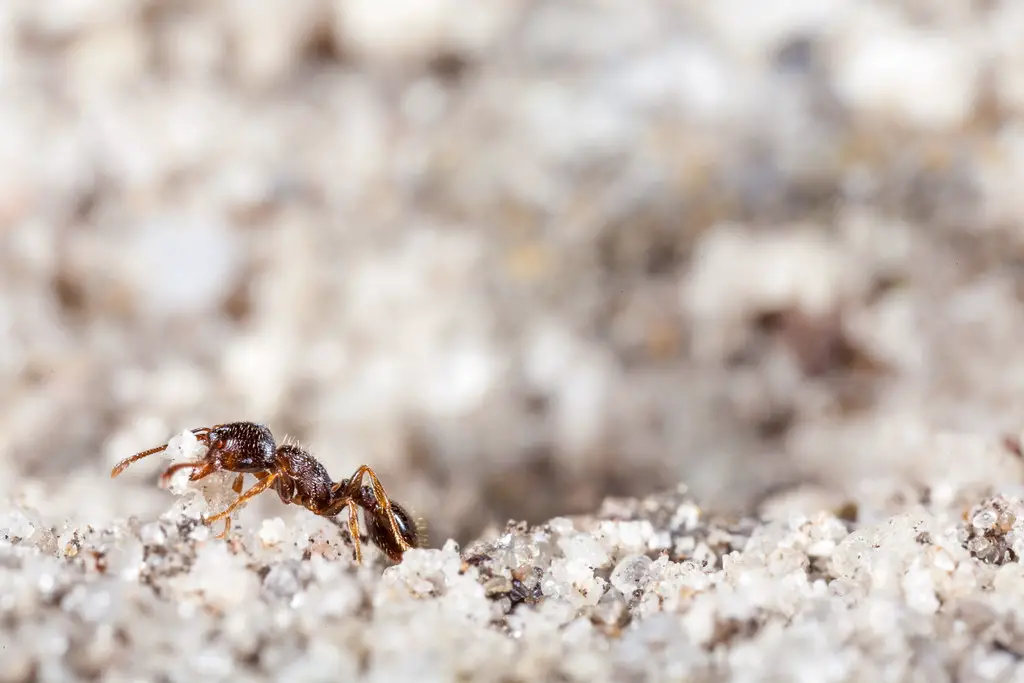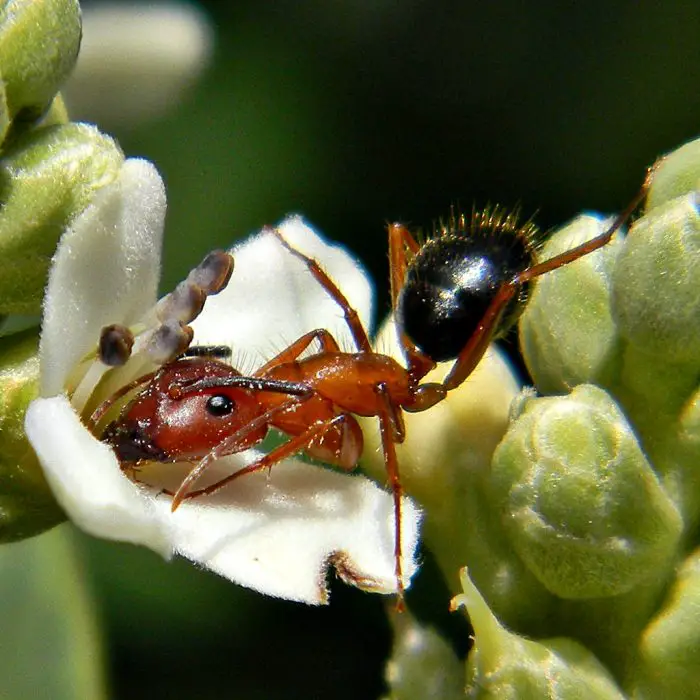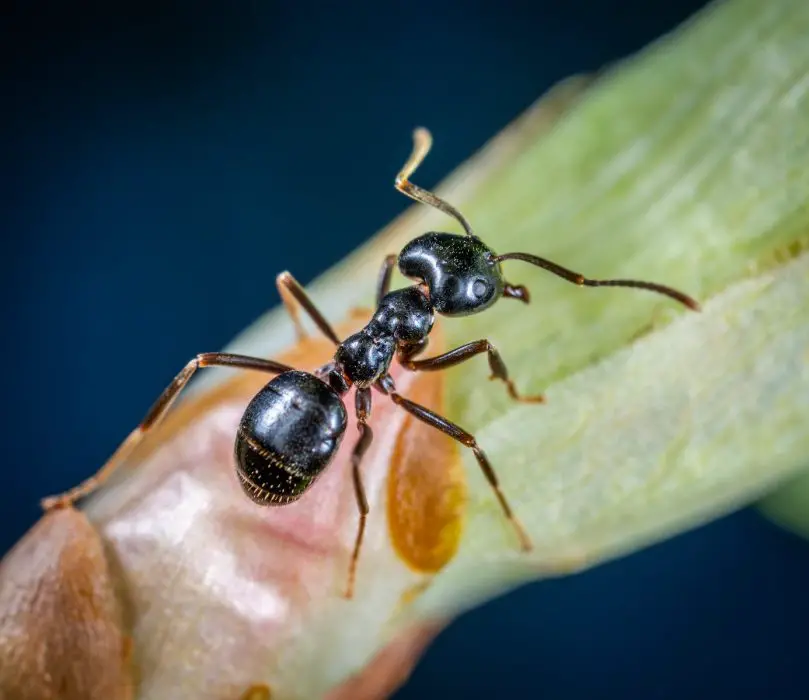Welcome to our exploration of the fascinating world of ants in Hawaii. Interestingly, despite being a well-known tourist destination, this tropical paradise serves as a breeding ground for over 60 different species of ants, none of which are indigenous.
These insects were unintentionally introduced by humans over the past two centuries, reshaping the islands’ ecosystems. This article aims to explore these unique ant species, delving into their distinct characteristics, habitats, and ecological roles.
We will look at how these tiny residents, which range in size from the tiny Pharaoh Ant to the larger Hawaiian Carpenter Ant, greatly affect Hawaii’s environmental balance.
Types of Ants in Hawaii
Hawaii, an archipelago rich in diverse ecosystems, is home to over 60 ant species, all of which are introduced rather than native. These ant populations have emerged over the last two centuries, primarily due to accidental introductions by humans.
Among the various species that have found a habitat in Hawaii, some of the most notable include the Big-headed Ant and the Crazy Ant. These islands, particularly the main Hawaiian Islands, serve as a unique ecological stage where these introduced species play significant roles.
While the exact count of ant species in Hawaii can fluctuate, a comprehensive list detailing these species reveals the extent of their diversity and impact on the local environment. Each species, from the Big-headed to the Crazy Ant, contributes to the intricate ecological dynamics of the Hawaiian Islands, despite their non-native status.
1. Pharaoh Ant (Monomorium pharaonis)
In the diverse ecosystems of Hawaii, the Pharaoh Ant is a tiny intruder with a significant impact. Let’s delve into the world of these minuscule but influential creatures.
- Size & Color: Approximately 2 mm long, yellow to light brown.
- Habitat: Thrives in various environments, especially indoors.
- Biodiversity Impact: Can disrupt local ecosystems due to aggressive foraging and competition.
- Complications: Known to cause hygiene issues in infested areas.
- Impact: A significant pest in urban and domestic settings.
2. Pavement Ant (Tetramorium caespitum)

On the bustling streets and quiet gardens of Hawaii, Pavement Ants make their presence known. Let’s explore these small, dark ants that rule the sidewalks and beyond.
- Size & Color: About 2.5 to 3 mm, dark brown to black.
- Habitat: Common in urban areas, building nests under pavements.
- Biodiversity Impact: Minimal impact on native biodiversity.
- Complications: Can infest homes, especially kitchens.
- Impact: A nuisance in urban environments due to foraging behavior.
3. Tropical Fire Ant (Solenopsis geminata)

Amidst Hawaii’s tropical paradise, the Tropical Fire Ant emerges as an unwelcome guest. Discover the impact of these small, fiery invaders in the island’s delicate ecosystems.
- Size & Color: Typically, 2 to 6 mm, reddish-brown to black.
- Habitat: Found in various outdoor environments; invasive in Hawaii.
- Biodiversity Impact: Disrupts local ecosystems by outcompeting native ant species.
- Complications: Causes painful stings, potentially allergic reactions.
- Impact: A threat to biodiversity and human health.
4. Hawaiian Carpenter Ant (Camponotus variegatus)

In the lush forests and wooden structures of Hawaii, the Hawaiian Carpenter Ant carves out its niche. Uncover the secrets of these large, wood-nesting ants and their role in the environment.
- Size & Color: Ranging from 6 to 12 mm, often black or dark-colored.
- Habitat: Nests in wood, including in trees and wooden structures.
- Biodiversity Impact: Plays a role in decomposing dead wood.
- Complications: Can cause structural damage to buildings.
- Impact: Ecologically significant but potentially damaging to human-made structures.
5. Ghost Ants in Hawaii
In the warm and humid corners of Hawaiian homes, the elusive Ghost Ants go about their business. Let’s shed light on these nearly invisible ants and their ghostly antics.
- Size & Color: Tiny, usually less than 2 mm, pale or translucent.
- Habitat: Prefers warm, humid environments, often indoors.
- Biodiversity Impact: Limited ecological role in native ecosystems.
- Complications: Can contaminate food in homes.
- Impact: A common household pest, particularly in kitchens and bathrooms.
6. White-Footed Ants in Hawaii

Navigating through the leafy undergrowth and homes of Hawaii, the White-Footed Ants leave a subtle but lasting footprint. Learn more about these small, distinctive ants and their sweet-toothed habits.
- Size & Color: Small, about 2.5 to 3 mm, dark with white feet.
- Habitat: Forms large colonies, often in moist environments.
- Biodiversity Impact: Impact on local ecosystems is not well-documented.
- Complications: Invades homes in search of sweet substances.
- Impact: A persistent pest in urban and residential areas.
7. Crazy Ants

Scuttling erratically across diverse landscapes of Hawaii, Crazy Ants bring chaos wherever they go. Dive into the world of these unpredictable and adaptable ants.
- Size & Color: Small, around 2.5 to 3 mm, dark brown to black.
- Habitat: Adapts well to various habitats, including urban areas.
- Biodiversity Impact: Can outcompete other ant species.
- Complications: Known for erratic movement and invasive tendencies.
- Impact: A nuisance in both natural and urban settings.
8.Hawaii Battles Fire Ant Invasion: Aerial Birth Control Deployed
In an unprecedented and innovative response to the escalating problem of fire ant invasions in Hawaii, authorities have turned to a novel solution: helicopters dispersing birth control for ants. This initiative aims to control the rapidly growing population of these invasive insects, which have been causing significant ecological and public health issues across the islands.
Fire ants, known for their painful stings and aggressive behavior, have become a major concern in Hawaii’s delicate ecosystems. They not only pose a threat to native wildlife but also impact agricultural practices and human health. The spread of these ants has been rapid and unyielding, leading to the search for effective and environmentally friendly control measures.
The use of helicopters to distribute ant birth control marks a groundbreaking approach in pest management. This method allows for the widespread and precise application of the control agent, targeting large areas that are difficult to access by ground teams. The birth control substance, specially formulated to affect only fire ants, works by inhibiting their reproduction, gradually reducing the population without the use of harmful pesticides.
This initiative reflects a shift towards more sustainable and innovative pest control strategies, balancing the need to protect Hawaii’s ecosystems and communities with environmental consciousness. The success of this program could set a precedent for other regions grappling with invasive species, showcasing how technology and science can come together to solve complex environmental challenges.
Conclusion
The ants in Hawaii present a remarkable example of nature’s diversity and adaptability. While ant species are vital to the ecosystem, pollinating plants and breaking down organic matter, they can be problematic in cities and residential areas. Understanding these ants is not just about acknowledging their presence; it’s about appreciating their role in the ecological tapestry of Hawaii and learning how to coexist with them. As we continue to explore and inhabit these beautiful islands, let’s remember the importance of maintaining a balanced ecosystem where every creature, no matter how small, has a vital part to play. Our journey through the world of Hawaiian ants reveals the intricate balance of nature and the importance of every species in maintaining ecological harmony.



